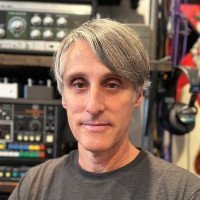The Ultimate Epic Sonic Journey


Cherry Audio’s ODC 2800 is an exceptional three-in-one virtual instrument that pays tribute to the legendary synth pioneer Alan R. Pearlman on the momentous 100th anniversary of his birth. This powerful synthesizer plugin draws inspiration from the revolutionary Odyssey analog duophonic synthesizer, launched by ARP Instruments in 1972.
Rated 5 Stars by MusicRadar! "ODC 2800 is one of the finest-sounding and best-looking synths around. Cherry Audio continue to provide us with some of the best software instruments available, so we’ll push the boat out here and say that this could be its finest synth plugin to date!"
With precision-crafted and circuit-modeled DSP designs from the award-winning developer Mark Barton, ODC 2800 goes beyond merely emulating ARP’s “Model 2800” synthesizer. ODC 2800 not only provides an authentic reproduction of the sound and appearance of all three versions of the original hardware, but also enhances the experience with expanded polyphony, an additional oscillator and LFO, extensive modulation options, and support for both velocity and polyphonic aftertouch. Furthermore, it features a redesigned and intuitive integrated effects suite that simplifies the sound design process and improves usability. ODC 2800 offers the ultimate sonic journey through time, connecting the past of synthesis innovation with today's essential tools for music production!
ODC 2800 includes over 330 sensational presets in 13 categories
Producers will find immediate inspiration in ODC 2800's extensive preset library, created by a talented sound design team led by veteran sound designer James Terris. And don't miss the Centennial Sounds for ODC 2800 Preset Pack (sold separately), featuring an additional 100 additional presets by James Dyson.

James is Director of Sound Design, responsible for preset programming and curation at Cherry Audio. He is a long-established sound designer and musician based in the San Francisco Bay Area who has worked with Dave Smith Instruments/Sequential, Pioneer DJ, Apple, and Hans Zimmer’s Remote Control.

James is a freelance sound designer and musician based in the UK. He creates third-party preset packs as JD Soundsets. He draws inspiration and influence from Tangerine Dream, 80s film scores, and others and has been a long-time sound designer for Cherry Audio, Modal, and IK Multimedia.

Drew Schlesinger began developing third-party sounds for Casio CZ synths in 1986, leading to a career designing presets for over 200 products from 30 companies including Roland, Korg, Kurzweil, Alesis, E-mu, Ensoniq, TC, Lexicon, Eventide, and others. After a 20-year hiatus in the corporate world, he has recently returned to music and sound design.

Andrew first worked on soft/hardware development, preset design and sample libraries in 1983, going on to work create for Sony, Amek, DAR, Steinberg, eMagic, Lexicon, Klark Technic, Akai PMI, Roland, E-Mu, Creative Labs, Novation, Red Sound, dS-Tec, Yamaha and others. After 25 years in AV/VR, he has recently returned to product and sound design.
Alan R. Pearlman’s company, ARP Instruments, launched its first analog synthesizer, the ARP 2500, in 1970. They followed this with their second product, the ARP 2600, in 1971. However, the 2600 initially struggled to gain traction among musicians due to its complexity and reliance on patch cords. In response, ARP introduced the Model 2800, a simplified synthesizer known as the Odyssey, in 1972.
With a brilliant design and layout by ARP co-founder, David Friend, the Odyssey featured a white control panel, a 37-key keyboard, only two voltage-controlled oscillators (VCOs), and internal pre-patching. It was celebrated for its immediacy and unique sound, largely due to its stable oscillators that delivered sawtooth, square wave, and pulse waveforms, as well as pulse width modulation. The Odyssey also offered features like oscillator sync and a ring modulator, which were not available in the Minimoog Model D at the time. Its design would have a significant impact on synthesizer design in the years that followed.
Moreover, the Odyssey included extensive sound-shaping capabilities, such as pitch modulation, sample-and-hold, and two filters. Its innovative keyboard-scanning system made it the world's first duophonic synthesizer, and it boasted a 2-pole (12 dB/octave) state-variable filter that further contributed to its sound and character.

In 1975, ARP released the updated Model 2810 Odyssey, or "Mk II," which featured a striking black and gold faceplate. These models initially used a 4-pole 24 dB/octave Moog-style ladder lowpass filter, but this was later replaced with a non-infringing filter of ARP's own design. In 1978, ARP launched the "Mk III," known as the 2820, distinguished by its black and orange color scheme. This model incorporated ARP's improved 4-pole 24 dB/octave filter and introduced proportional pitch control (PPC), using three pressure-sensitive buttons to control bend up, bend down, and vibrato. Sales of the Mk III continued until ARP Instruments declared bankruptcy in 1981.
The Odyssey remains one of the most impactful synthesizers in music history, making its mark from ABBA to Zawinul. Countless renowned artists have harnessed its power, including Herbie Hancock, George Duke, Chick Corea, Kraftwerk, Nine Inch Nails, Deep Purple, Billy Currie of Ultravox and Visage, Gary Numan, John Foxx, and Yellow Magic Orchestra. In 1980, Peter Howell of the BBC Radiophonic Workshop prominently showcased the Odyssey in the groundbreaking synthesized reimagining of the "Doctor Who" television series theme.
Cherry Audio has condensed all of this innovation and history into one of its most significant virtual synthesizer releases. ODC 2800's proprietary DSP coding accurately replicates all of the sonic nuances of all three original hardware revisions. It also enhances the experience with additional functionality and modulation options, making it the ultimate version of the classic synth. The user interface includes matching designs for Models 2800, 2810, and 2820. You can lock the design to your favorite, and hide a lower panel for the keyboard and effects, now easily accessible through a new tray.
The duophonic architecture has been upgraded to support Monophonic, Mono Legato, Duophonic, and Polyphonic modes. Users can choose from 1, 4, 8, or 16 voices, along with a unison mode. The synth supports velocity, channel aftertouch, and polyphonic aftertouch with three assignable controls. It also includes adjustable portamento settings and a CS-80-like "smart portamento" for enhanced musicality. The syncable dynamic arpeggiator includes Swing, Chance, and Feel to add degrees of randomness and a human touch to arpeggiated patterns.
ODC 2800 has also been expanded to include three complete VCOs with sawtooth and square/pulse waveforms, with quantizable frequency control and extended oscillator sync routing. Each VCO has three frequency modulators (FM), including an assignable modulator offering 35 source options. Ring modulation is straightforward, and cross-modulation is now possible through assignable FM menus.
The LFO options have been significantly expanded, now featuring two separate LFOs with five waveforms and options for mono and poly modes, key reset, sync, pulse width, and delay. The Sample/Hold Mixer allows for assignable modulation of the VCF and VCA, with 35 predefined modulation sources.
ODC 2800's VCF emulation features three filters: the Mk I 4023 (12 dB/Oct, 2-pole), the Mk II 4035 (24 dB/Oct, 4-pole ladder), and the Mk 4075 (24 dB/Oct, 4-pole cascade). Each offers lowpass, bandpass, and highpass responses, with optional gain compensation to prevent bass loss at high resonance. A separate highpass filter is also included.
The envelopes have also been expanded, with two complete ADSR envelope generators with velocity control and trimmer-style drift controls for VCO, VCF, and EG to further emulate the analog vibe.
ODC 2800 features a resourceful new effects strip with accessible controls for toggling effects, soloing tracks, and adjusting the dry/wet mix. Global controls allow for enabling all effects, changing the overall level, and expanding the stereo width. The expanded effects tray includes five studio-quality pedal-style options: Distortion/EQ, Dual Phaser, Flanger/Chorus, three Delays, and five Reverbs.
ODC 2800 also includes comprehensive MIDI mapping for controllers, seamless DAW integration, and over 330 professional presets across 13 categories, making it an essential virtual instrument for vintage synth lovers and modern music producers.
The design and release of the ODC 2800 synthesizer caps off Cherry Audio's month-long celebration of the life and work of visionary synth pioneer Alan R. Pearlman on the 100th anniversary of his birth. Cherry Audio has donated a portion of the profits from its June 2025website sales of ODC 2800 to the Alan R. Pearlman Foundation, a 501(c)(3) not-for-profit organization which supports the legacy of innovation represented by ARP Instruments and the Odyssey.
Cherry Audio is delighted to have our musician friend Mike Martin, the driving force behind the 2024 Wurlybird 140B Electric Piano, join us to introduce the ODC 2800 synthesizer in this comprehensive quick-start tutorial.
All aspects of the classic ARP® Instruments Odyssey synthesizers — the 1972 Mk I 2800 series, the 1975 Mk II 2810 series, and the 1978 Mk III 2820 series — have been meticulously replicated with precise detail
Additionally, ODC 2800 has been significantly enhanced with expanded functionality and modulation options, making it the ultimate expression of the legendary synth that inspired it
Award-winning synth designer Mark Barton's proprietary DSP coding perfectly reproduces every sonic nuance and response of the original synthesizers
Introduces a new look for Cherry Audio virtual instruments with the integration of an expandable panel for more immediate access to effects settings
Over 330 professionally-designed presets in 13 categories
Monophonic, Mono Legato, Duophonic, and Polyphonic modes with 1, 4, 8, or 16 voices, and unison
Three complete VCOs, each with sawtooth and square/pulse waveforms
VCO frequency with quantize options
Extended oscillator sync routing for VCO-2 to VCO-1 or VCO-3, and VCO-2 to VCO-1 or VCO-2
Three Frequency Modulators (FM) for each VCO, including an extra assignable modulator with 35 source options
Portamento with adjustable VCO-2 and VCO-3 delay settings
Smart portamento enhances polyphonic performance in a more musical fashion
Customizable options for PPC (Proportional Pitch Control) for Pitch Bend (+/-12 semitone range) and PPC modulation (+/-7 semitone range)
Noise generator with white and pink, with additional violet and brown noise colors
Ring mod, and now cross-modulation between the VCOs possible through the assignable FM menus
Greatly expanded LFO options with two discrete LFOs, each with sine, triangle, square, sawtooth, and ramp waveforms, and options for mono or poly, key reset, and sync. Additional waveshaping options with pulse width and delay amount
Sample/Hold Mixer with assignable modulation sources
VCF filter emulation based on the three versions: Rev 1 4023 (12 dB/Oct, 2-pole) from the 2800; Rev 2 4035 (24 dB/Oct, 4-pole, ladder) from the 2810; and Rev 3 4075 (24 dB/Oct, 4-pole cascade) from the 2820
Highpass filter
Lowpass, bandpass, and highpass responses on all three VCFs
Selectable gain compensation on both 4-pole filters so you don’t lose bass at high resonance
Adjustable VCA drive
Individually assignable modulation controls in the mixer for VCF and VCA with 35 possible sources
Two full ADSR Envelope Generators with velocity control
Trimmer-style Drift controls for VCO, VCF, and EG
Matching UI panel designs for Models 2800, 2810, and 2820 with UI lock option and hideable panel for keyboard and effects
Syncable dynamic arpeggiator with Swing, Chance, and Feel to add degrees of randomness to arpeggiated patterns in regular, order, or random play modes
Support for velocity, channel (mono) aftertouch, and polyphonic aftertouch with compatible USB/MIDI controllers
Three distinct assignable aftertouch controls with 24 destinations
New Effects panel with persistently accessible UI controls for on/off, solo, bipolar modulator amount slider, and dry/wet mix for each effect. Global FX on/off, level, and stereo expand
Integrated studio-quality pedal-style Effects: Distortion/EQ effect, Dual 4/8-stage Phaser, Flanger/Chorus, three Echo delays, and five Reverb types
Syncable discrete Effects Modulator (FX LFO) with ramp, saw, triangle, sine, square, and random waveforms and delay
Master Volume with Limiter, and Master Tune
Standalone virtual instrument and plug-in versions included
Super accurate DAW sync
Highly optimized coding for optimal performance with ultra-low CPU load
User-adjustable oversampling control
Complete MIDI control and DAW automation for all controls, with easy-to-use MIDI learn and mapping (Preset and Global)
Fully-scalable UI, with Cherry Audio's popular Focus zoom-in feature, as well as standard UI zoom and resize via drag
Complete documentation available directly online from the instrument or in downloadable PDF format
Also available: Even more exemplary sounds are on tap directly from Cherry Audio the Centennial Sounds for ODC 2800 Preset Pack ($9.99, sold separately) by James Dyson that showcase its more atmospheric side in nine categories. Dive deep into advanced modulations, integrated effects, rhythmic arpeggiations, and aftertouch performance features.
14 Arps
11 Basses
8 Brass
10 Duophonic
12 Keys
10 Leads
14 Pads
10 Polyphonic
11 SoundFX
ODC 2800 synthesizer is available in AU, VST, VST3, AAX, and standalone formats.
macOS Requirements: macOS Requirements: macOS 10.13 or above. 64-bit required. Intel or Apple Silicon processor. 3.4 GHz Quad-Core or Apple Silicon CPU with 8GB of RAM is recommended. Hard disk space: 85 MB.
Windows Requirements: Windows 7 or above (including Windows 11), 64-bit required. 3.4 GHz Quad-Core computer with 8GB of RAM recommended. Hard disk space: 85 MB.
NOTE: Internet connection required for product activation
ARP® and ARP ODYSSEY® are registered trademarks of Korg Inc. There is no association, affiliation or endorsement of Cherry Audio or its products by Korg. References here to ARP and the Odyssey synthesizer by ARP Instruments are included as historical reference.